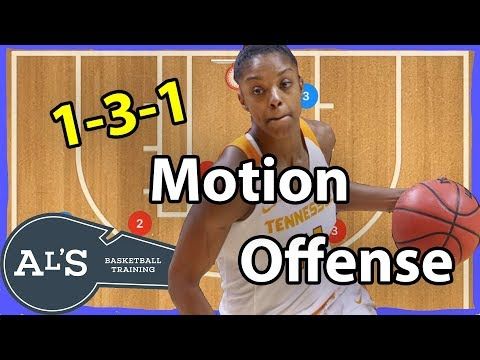Home »
Misc »
How to run the motion offense in basketball
How to run the motion offense in basketball
7 Keys to a Successful Motion Offense in Basketball
There are few things more enjoyable than watching a well-executed motion offense.
The basketball zips quickly around the perimeter, players are constantly cutting and screening for each other, and the team always seems to find a wide open shot.
It’s beautiful basketball.
But an offense like this doesn’t ‘just happen’...
Especially if your method is simply finding 7 better-than-average players and throwing them onto the same team.
Nope.
A beautiful offense like the one described above is the result of coaches and players who are dedicated to executing the “7 keys” which make a motion offense successful.
And in this post, I’ll show you what those 7 keys are.
But first, let’s start with defining exactly what a “motion offense” is...
What is a Motion Offense?For a simple definition...
A “motion offense” is an offensive strategy that uses ‘rules’ or ‘principles’ to help players read the defense and make decisions.![]()
It usually involves a lot of passing, screening, cutting, and also requires great spacing.
Unlike set plays or a “continuity offense” (such as the Flex), a motion offense has no repeating offensive pattern that plays perform over and over again.
Why Coaches Should Run a Motion Offense:Deciding to implement a motion offense on your team isn’t easy…
It requires the coach giving up control of the offense to the players.
Which is much harder than most coaches think, and will probably lead to a lot of short-term frustration and anger from the head coach.
But here’s why you should do it anyway...
1. Great For Long-Term DevelopmentAllowing your players to learn how to read the defense and make decisions is the most important reason why you should run a motion offense.
Unlike set plays where you tell your players exactly where to screen, exactly when to screen, and exactly who to screen (no decisions)…
In a motion offense, you give the team a set of ‘rules’ and then allow them to make decisions.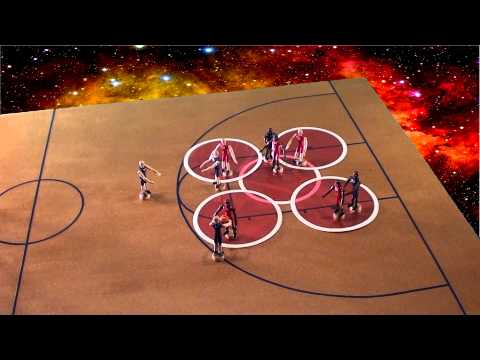
This teaches players how to play basketball.
Which is fantastic for each player’s long-term development in basketball.
2. All Players Contribute to the OffenseA motion offense requires all 5 players on the court contributing to be successful.
This doesn’t mean every player needs to dominate the ball either....
Even if a player doesn’t touch the basketball in an offensive possession, their spacing, cutting, and screening is still important for creating scoring opportunities for their teammates.
3. Wears Down the DefenseA well-executed motion offense is difficult to defend.
If your players are cutting hard with purpose, setting strong screens for each other, and moving the ball quickly around the court…
The defense is going to fatigue and break down very quickly.
This will open up scoring opportunities for your team.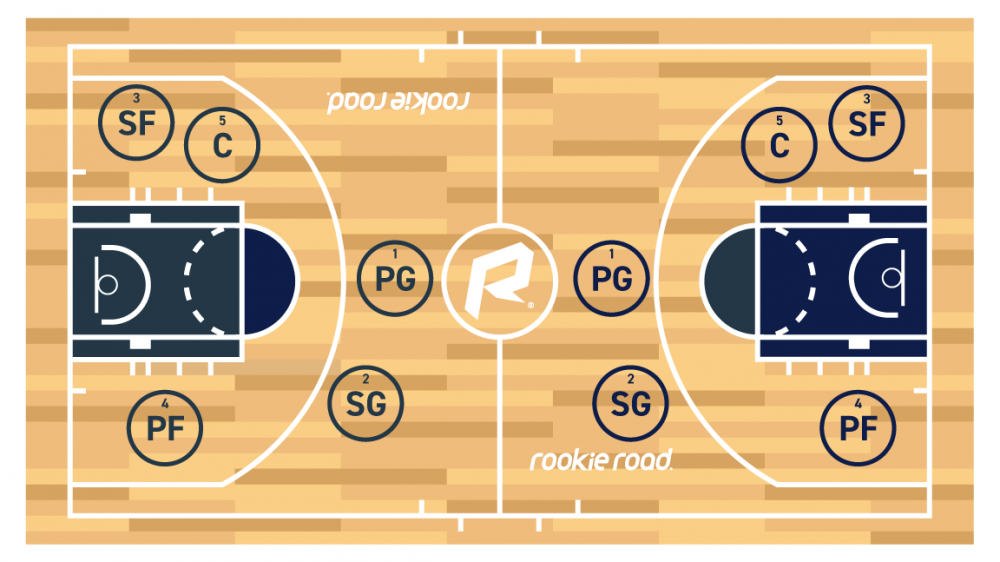
4. Difficult For Opposition Teams to ScoutWhen you’re running an offense that involves players making decisions based on the defense…
Your offense automatically becomes near impossible to scout.
If the defense cuts off one option, your players can simply execute a counter and continue running the motion offense.
For example:
If the defense overplays a pass to the wing, the offensive player can back-cut and then fill the corner while their teammates rotate around to receive the pass.
Simple.
7 Keys to a Successful Motion OffenseRegardless of which motion offense you decide to implement on your team (I’ll share the different options you have in the next section)…
There are 7 important ‘keys’ which will determine your offense’s success.
Here they are:
1. Hard CutsHaving players that are willing to cut hard - even when they’re not likely to receive the ball - is one of the most overlooked aspects of a successful motion offense.
Hard cuts are effective for several reasons:
a. They force help from off-ball defenders
If a player in help position notices an offensive player cutting hard and calling for the ball, they’ll be forced to slide over and provide help.
This can open up their opponent for a catch-and-drive or shot.
b. Prevents the cutter’s defender from helping
When a player commits to cutting to the hoop hard, it also prevents their defender from helping.
They’ll be forced to stay close to the cutter and deny the pass.
2. Strong ScreensWhether it’s a back screen, cross screen, drag screen, elevator screen, flare screen, or any other type of screen…
A strong screen gives an offensive player an advantage.
That’s the key.
Depending on where they player is on the floor at the time, this advantage might help them to:
- Get open to receive the ball
- Give them an open lane to drive to the basket
- Create the space needed to shoot
- Allow them to set up a teammate
- etc
To run a great motion offense, you need effective screening.
3. Quick PassingFollowing on from the previous point…
An offense needs to move the ball quickly in order to make the most of the ‘advantages’ created when running a motion offense.
To do this, it’s best to have players who can think 1 - 2 steps ahead of the play…
And since the skill of passing is 90% decision making, this is done by putting players in situations where they need to read the defense and make decisions on what to do next.
Small-sided games are great for this if you’re coaching a young team.
Once your players develop the ability to quickly read the defense and then make the smart play, the ball will be zipping around the perimeter in no time.
4. Smart SpacingAs the ball moves around the court, your players need to keep moving too.
It’s important your players maintain good spacing on every possession.
This involves offensive players distancing themselves from each other at lengths that make it difficult for defenders to provide help without giving up an open shot, drive, or layup.
Correct spacing will depend on the motion offense you choose to run.
I’ll give you a few examples soon.
5. Purposeful DribblingToo much unnecessary dribbling will any hurt any offensive team regardless of what offense their team is attempting to run.
But too much dribbling is especially problematic if you’re trying to run a motion offense.
This is because the ball needs to be moving quickly to ensure all cuts, screens, and the movement of players is effective.
Rick Majerus once said there are 3 reasons to dribble:
- Acquire balance.
- Break 5 second count.
- Make the dribble take you somewhere.
Players executing a motion offense need to remember this at all times.
6. Positionless PlayersWhen all of the players on your team have the ability to fill every position on the floor, motion offense is much easier to run.
That’s not to say that your players will play every position…
For example, you likely won’t use your PG in the post when playing a 4-out 1-in motion offense.
But all of the players on your team could fill any position if necessary.
This is also one of the best thing you can do for each player’s basketball development.
7. Constant MovementWhen you put all these “keys” together…
The outcome should be an offense with hard cuts, strong screens, quick passing, smart spacing, and purposeful dribbling.
The goal is then to make sure players are constantly moving throughout the offense.
4 Motion Offenses You Should UseHere are four different motion offenses you can choose from depending on your team’s strengths, weaknesses, and the skills of your players...
a. 5-Out Motion OffenseThe 5-out motion consists of 5 players on the perimeter, and no one inside.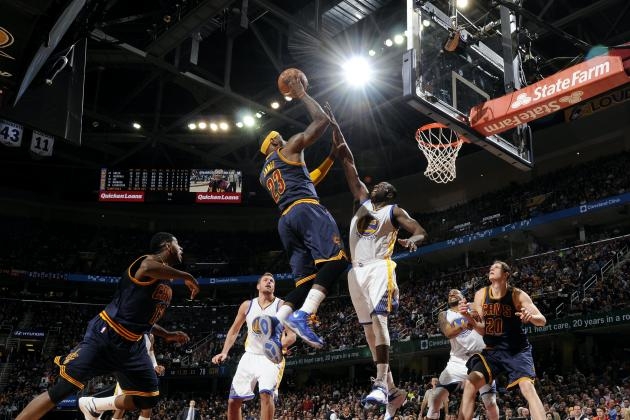
A player at the top of the key, a player on each wing, and a player in each corner.
This is one of the best offenses for youth teams - in my opinion - because it creates a lot of open space for players to penetrate and finish around the basket.
b. 4-Out 1-In Motion OffenseThe 4-out 1-in motion offense consists of 4 players on the perimeter, and 1 player inside.
A player in each slot (top of key), a player on each wing, and a player on the low block.
This motion offense creates more space around the three-point line for perimeter players, and also gives the offense a target inside.
But depending on how a coach uses the post player, they can clog up driving lanes.
The 3-out 2-in motion offense consists of 3 players on the perimeter, and 2 players inside.
A player at the top of the key, a player on each wing, and a player on each low block.
This motion should only be used by teams who have two high-IQ post players.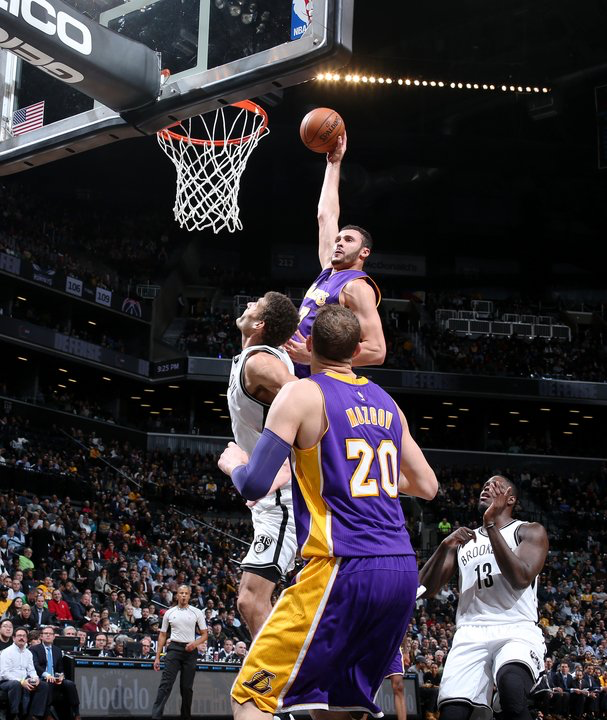
By committing to this offense, you’re committing to getting the basketball inside on every possession and then allowing your ‘bigs’ to make plays for themselves or teammates.
The dribble drive motion offense consists of 4 players on the perimeter, and 1 player inside.
A player in each slot (top of key), a player in each corner, and a player on the low block.
This motion is best used by teams who have aggressive ball-handlers who are capable of breaking down their direct opponent and attacking the rim.
Conclusion:A motion offense is fantastic to run if you’re passionate about the long-term development of the individual players on your team.
(I hope you are)
By giving your players ‘rules’ to follow and then allowing them to make decisions throughout a game, you’ll skyrocket their basketball IQ in a very short amount of time.
But be warned...
It can be a frustrating process.
Your players will make mistakes while they’re learning, and there will be times when you want to give up and return to set plays.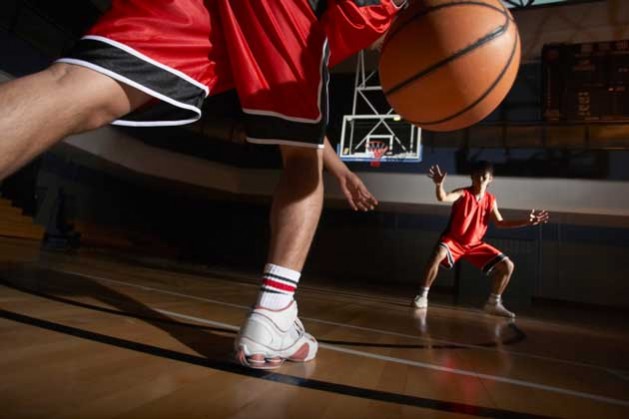
But I encourage you to stick with a motion offense and use it long term.
Motion Offense for Youth Basketball
We highly recommend motion offense for youth basketball because it's an extremely effective way to develop players. Motion offense allows you to teach fundamentals while working on your team offense. That might seem strange at first, but you actually work on skills and motion offense at the same time. It's an extremely efficient way to practice. Not to mention, motion offense gives players freedom to learn "how to play".
When teaching a patterned offense and set plays, you waste countless hours trying to get players to memorize the pattern. This is a waste of time and takes away from skill development (which is the MOST important thing for young kids).
Back to my original point, here's how you can work on Skills (fundamentals) and Motion Offense at the same time...
- First, pick a couple cuts or screens that you think would be good for your group.
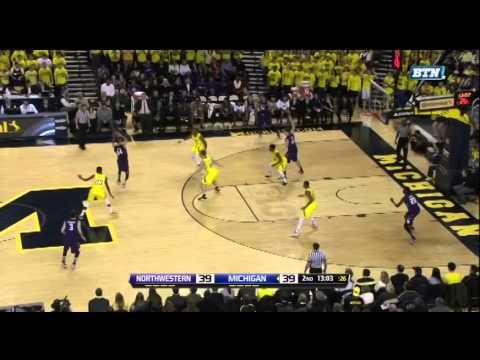 For example, you could choose down-screens and away-screens.
For example, you could choose down-screens and away-screens. - Next, run shooting/footwork drills that incorporate those movements. You could have two offensive players (no defense). One player on the wing, another player on the block. A coach or third player could have the ball on top of the key. The player on the wing sets a down screen, the other player rubs off the screen, catches the ball, pivots, and shoots. Now repeat over and over. Your players are working on screens (part of your motion offense), pivoting footwork and shooting (skills).
- You can do the same thing with away screens, basket cuts, and any type of cut or screen. The key is to choose a couple elements from your motion offense and turn those elements into skill building drills. Your imagination is the only limit to the types of drills you can come up with. It's also important to mix things up and make the drills fun too!
By practicing this way, you save a huge amount of time and get more done.:no_upscale()/cdn.vox-cdn.com/uploads/chorus_asset/file/2430636/Screen_Shot_2014-10-21_at_9.44.51_AM.0.0.png)
In a youth motion offense, your primary rules should allow you to maintain spacing, maintain order, keep people moving, and keep everyone involved. For example, use a 5-out motion and have three rules:
- After every pass, the passer moves. (Cut or screen)
- Do not stand still for more than 2 seconds.
- Take the first good shot.
When teaching motion to young players, don't go too fast and don't worry too much about your players executing offense. If they maintain decent spacing and move around, you are in good shape. Almost all of your time should be on skill development. Then as time goes on, you can take a skill and show them how to use it in different situations in the motion. But even before that just let the kids get comfortable on the court. Let them play and learn at the same time as you. Movement and spacing will cause things to happen. They will start figuring things out.
Youth coaches should concentrate on teaching skills and then just letting kids play. Motion is perfect for that.
Related Articles & Products
Don Kelbick's Motion Offense - A Comprehensive Guide to Implementing a Motion Offense
Open Post Offense - Motion Offense, Diagrams, Drills, and Plays
Could 3 on 3 Basketball Be the Best for Youth Players?
Motion Offenses, Drills, & Tips
What do you think? Let us know by leaving your comments, suggestions, and questions...
Basketball attack time - 24 second rule
Editor's Note: You are in UNICS defender Yevgeny Kolesnikov's Ferris Wheel blog. Here, Evgeny talks about the life of a professional athlete, about the state of Russian basketball and even about the World Cup. Plus, subscribe - and there will be even more such posts on the Tribune.
Basketball is a game consisting of a bunch of rules and nuances.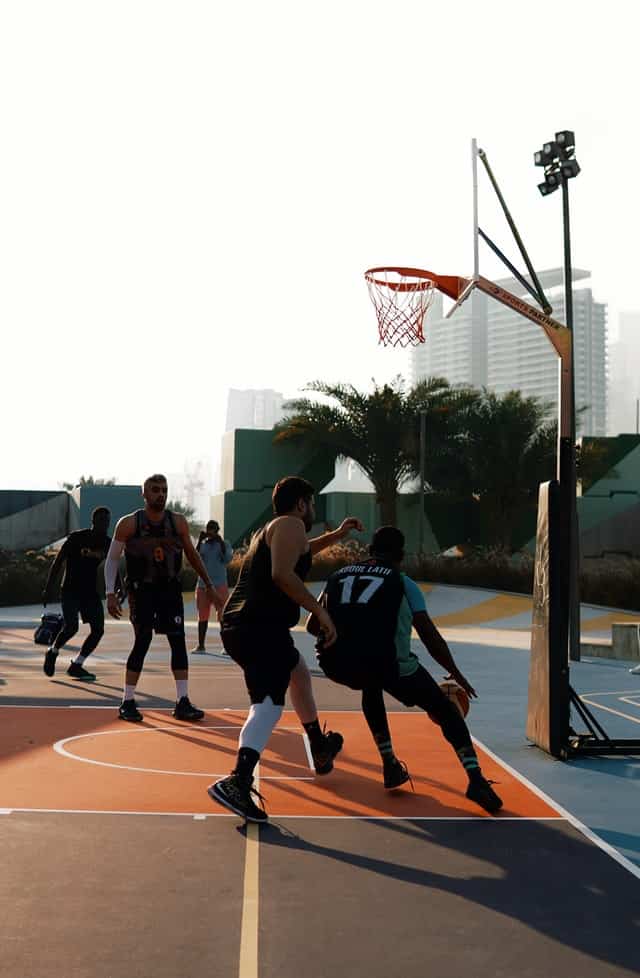 Sometimes it is these nuances that can decide the outcome of a tense match. Therefore, it is vital for both players and coaches to know them. I'll tell you about some of the changes in the rules that have appeared this season.
Sometimes it is these nuances that can decide the outcome of a tense match. Therefore, it is vital for both players and coaches to know them. I'll tell you about some of the changes in the rules that have appeared this season.
I'll start by reducing the time to attack. No, no, don't worry, it hasn't changed in all cases. Previously, when the ball bounced, the team was given 24 seconds to attack. Now the time has been reduced to 14 seconds. True, there is a nuance here. If the ball bounces further than the center line (to the other half of the court), then the counter measures 24 seconds.
Loading…
We go further. Previously, you could not throw the ball to yourself and score from above, two players did it - one threw, and the other scored from the rebound. This was often seen in all-star matches. Now all this can be done by one player.
Also among the changes is this. If the player did not have dribbling, then after throwing at the backboard, he cannot continue to dribble. And if there was a dribble, then after throwing at the shield, the player can dribble.
And if there was a dribble, then after throwing at the shield, the player can dribble.
Next change. Earlier, at a key moment (as a rule, this happens in the last attacks, 50-60 seconds before the end of the match), the ball was thrown from under the ring or from behind the sideline, and the player of the defending team “jumped” from behind the line to the attacker, crossing this line. The referee stopped the game, but the defending team had already read the formation of the players and the direction of the ball and was already ready to attack the opponent, which gave it an advantage in the decisive combination. Now this is being suppressed much more seriously. The referee shows the gesture along the end or touchline, imitating a wall. And if the defending player crosses the line, then the team is given a technical foul - i.e. the attacking player scores one free throw. So now the defense has no advantages.
Loading…
As for timeouts, there are changes here as well. If earlier in the last minute the ball was thrown clearly from certain positions: for example, if the team was on the attack, then it began to throw the ball from the side of the attack. Now the coach has a choice: if he wants the team to put the ball into play from his own half, then 24 seconds are given for the attack, but if a position is chosen in the opponent's half, then 14 seconds are allotted for the attack. So you can choose where to take the ball out of four options. The coach can inform the referee staff about this a second before the start of the attack. This was done with the expectation of introducing diversity into the game, a certain element of unpredictability and tactical actions.
If earlier in the last minute the ball was thrown clearly from certain positions: for example, if the team was on the attack, then it began to throw the ball from the side of the attack. Now the coach has a choice: if he wants the team to put the ball into play from his own half, then 24 seconds are given for the attack, but if a position is chosen in the opponent's half, then 14 seconds are allotted for the attack. So you can choose where to take the ball out of four options. The coach can inform the referee staff about this a second before the start of the attack. This was done with the expectation of introducing diversity into the game, a certain element of unpredictability and tactical actions.
It is clear that the reduction of the time to attack in the opponent's half occurs with the intention to speed up basketball, to make it more dynamic. Every year the game becomes more and more dynamic and athletic, any stops and standings are removed. Perhaps soon we will reach the point where in basketball, as in hockey, there will be a quick change of line-up (in a minute or two), they will immediately change in fives.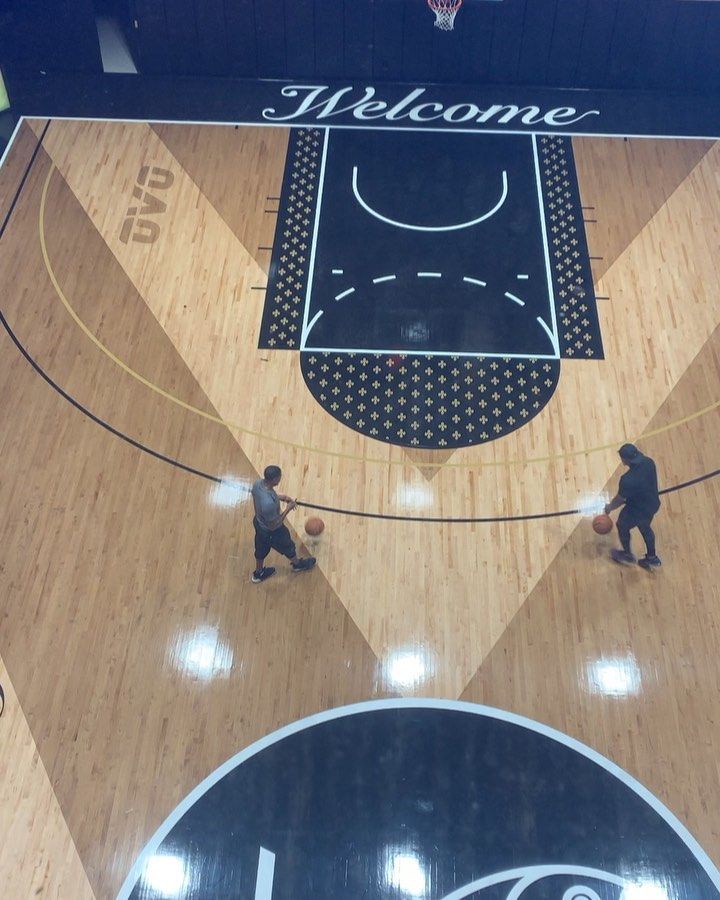 The game in this case will take place at maximum speeds. People come to watch fast, gambling basketball, they are interested in the game being continuous, with a lot of shots, and not reminiscent of stomping in one place and just “holding” the ball with the whole team. Due to the speed of action on the court, the players have new options in attack, and basketball becomes more spectacular. And just when the time for an attack decreases, the number of these attacks themselves increases, and, consequently, the effectiveness also increases.
The game in this case will take place at maximum speeds. People come to watch fast, gambling basketball, they are interested in the game being continuous, with a lot of shots, and not reminiscent of stomping in one place and just “holding” the ball with the whole team. Due to the speed of action on the court, the players have new options in attack, and basketball becomes more spectacular. And just when the time for an attack decreases, the number of these attacks themselves increases, and, consequently, the effectiveness also increases.
Loading…
I do not rule out that the time of playing segments will soon increase, and in Europe we will play not 10 minutes, but 12, as in the NBA. The composition of the teams is evened out, the games become more intense, and often 40 minutes is not enough to determine the winner.
Are we heading towards the NBA? I think yes. Of course, overseas basketball is completely different, more intense, and there are a lot more games.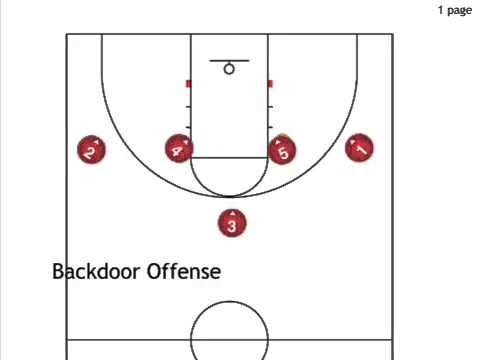 But European basketball has already come close to NBA basketball in many ways. The same Euroleague teams play with almost the same intensity as the teams in the NBA. The Euroleague will continue to approach the NBA. But this is more about the athleticism of the game, but in the tactics that have always distinguished European basketball, I think the teams of the Old World will not lose. Euroleague stars can play at the top level in the NBA, become team leaders and score decisive goals, and do it in more than one match. Look at the same Luka Doncic, who is the leader of the Dallas Mavericks and rescues his team at key moments.
But European basketball has already come close to NBA basketball in many ways. The same Euroleague teams play with almost the same intensity as the teams in the NBA. The Euroleague will continue to approach the NBA. But this is more about the athleticism of the game, but in the tactics that have always distinguished European basketball, I think the teams of the Old World will not lose. Euroleague stars can play at the top level in the NBA, become team leaders and score decisive goals, and do it in more than one match. Look at the same Luka Doncic, who is the leader of the Dallas Mavericks and rescues his team at key moments.
By the way, tactical training, understanding of the game, which basketball players of the former Yugoslavia are famous for (the same Luka Doncic, as well as Bogdan Bogdanovich, Nikola Jokic), helps them a lot in the NBA, in their consolidation and progress there.
Changes in the rules happen all the time - after all, basketball does not stand still.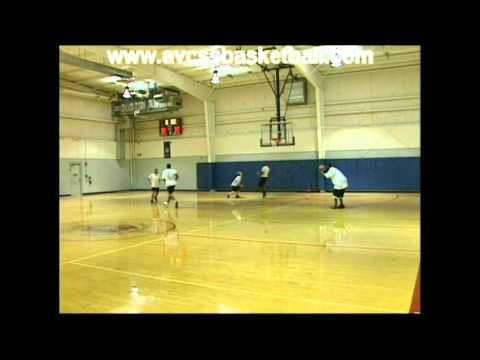 Of course, it takes time to get used to them: you get used to some changes quickly, to some not so much. For example, the cardinal change was the “pushing back” of the three-point line. Now the changes are more tactical in nature, and they have a greater impact on the work of the coach. But, of course, the player must be aware of these changes and, if necessary, correct the judge. There are such moments. We are professionals, and knowledge of the rules is one of the components of our work.
Of course, it takes time to get used to them: you get used to some changes quickly, to some not so much. For example, the cardinal change was the “pushing back” of the three-point line. Now the changes are more tactical in nature, and they have a greater impact on the work of the coach. But, of course, the player must be aware of these changes and, if necessary, correct the judge. There are such moments. We are professionals, and knowledge of the rules is one of the components of our work.
Loading…
True, one of the recent changes in the rules is very applied in nature. For a long time, there were disputes between the judges about the interpretation of the turn over the back. Is it a run or not? The point here is this. When you run and see an opponent in front of you, you start to take two steps “over the back” - make a turn and complete the action. In this case, the player guarding you remains behind. It was allowed five years ago. Then it was noted that this action is effective, and the Serbs use it especially actively.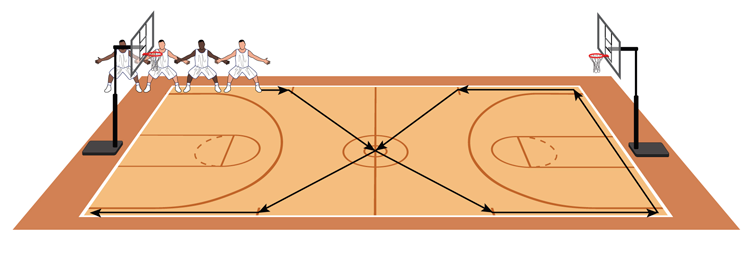 After much discussion, it was decided to qualify this action as a run. As a result, for 2 years, the rule treated it as a run. It can even be said that the ban on this movement ruined a number of players' careers. And now this action is allowed again and is gradually returning to the arsenal of some players.
After much discussion, it was decided to qualify this action as a run. As a result, for 2 years, the rule treated it as a run. It can even be said that the ban on this movement ruined a number of players' careers. And now this action is allowed again and is gradually returning to the arsenal of some players.
In my opinion, the reduction in the time to attack again awaits us soon. After five years, 14 seconds may be reduced to 12. Perhaps a four-point shot will be introduced to increase the spectacle of the game. FIBA and the Euroleague are organizations that are interested in constantly increasing the marketing appeal of basketball. Therefore, they are constantly thinking about increasing interest in the game. As I understand it, these organizations, when adopting the rules, consult with a large number of people - referees, players, those who have experience playing in the NBA. We all know that FIBA and the Euroleague are constantly in conflict over the organization of their tournaments and the intersection of interests.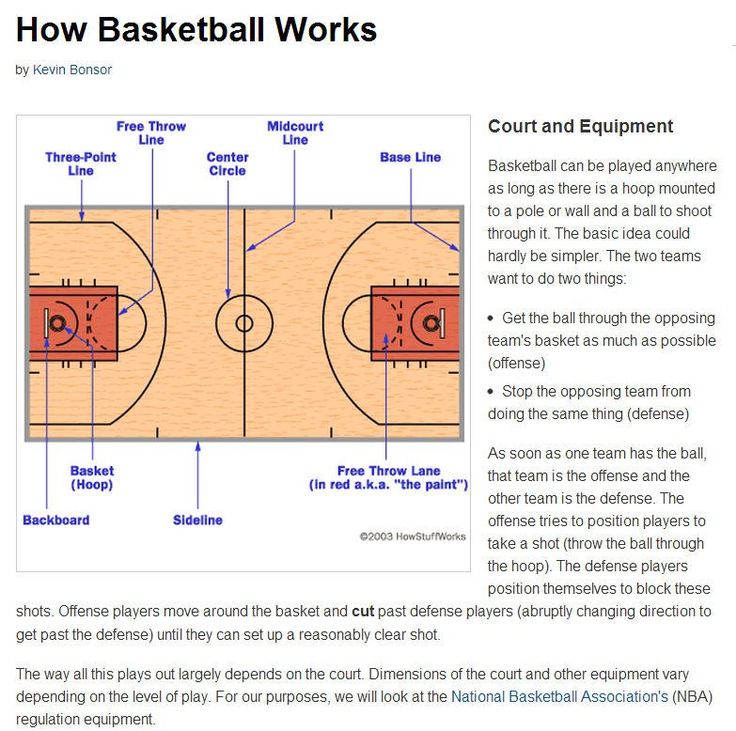 Basketball rules in FIBA and Euroleague competitions are slightly different, but we play with slightly different rules depending on the tournament. How will they change? Let's see. But they definitely will.
Basketball rules in FIBA and Euroleague competitions are slightly different, but we play with slightly different rules depending on the tournament. How will they change? Let's see. But they definitely will.
Loading…
Photo: RIA Novosti/Maxim Bogodvid; vtb-league.com; slamdunk.ru
Contents
- What does the 24 second rule mean?
- Number "22"
- Number "7"
- Number "15"
- Number "10"
- Number "3"
- Number "21"
- Number "20"
48 Number "11" - Number "12"
- Dream job. What does the European NBA office look like
What does the 24 second rule mean?
The 24 second rule is the team's full attack rule. That is how much is offered to each team for the attack until it is completed. If in 24 seconds the team does not have time to finish the attack, or there is no interception from the opponent, then the attacking team loses the ball, which goes to the opponent.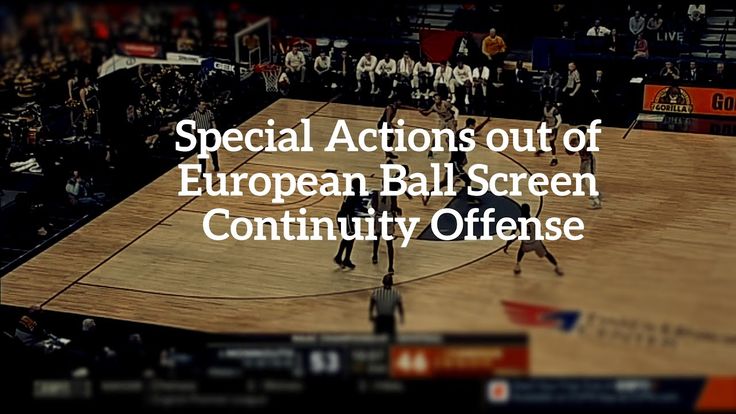 But there are two separate cases, which are considered separately.
But there are two separate cases, which are considered separately.
Assuming less than 14 seconds left to attack and the team shoots, the ball misses the hoop but bounces back into play. If in this case it goes to the same attacking team, then the time to attack increases to 14 seconds.
We also separately consider the case when an opponent player commits a foul, but one that does not lead to free throws. If at this moment there were more than 14 seconds left for the attack, then the time to continue the attack becomes 24 seconds again, if there was less time left for the attack, then in this case the team is already given 14 seconds to attack.
We also note that in case of violation of all three rules (3, 8 and 24 seconds), the team loses the ball, which passes to the other team and it already starts its attack.
Numbers "11", "12" and "5" are the leaders of the rating.
Have you ever wondered which number is the most popular among players? Think #23? No.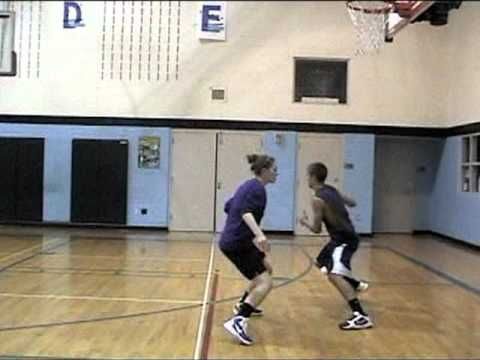 #32, 33, 34? Also no. Today I will tell you which 10 numbers are the most used among NBA players throughout its history.
#32, 33, 34? Also no. Today I will tell you which 10 numbers are the most used among NBA players throughout its history.
Since the material has been prepared for a long time, the number of players who played under one or another number is relevant for the off-season and does not take into account the current season. However, if there is a difference, then it will not affect the general arrangement in any way.
Number "22"
Number of players who used - 320
Loading…
Most Number Uses – 27 (Brooklyn Nets)
Highlights: Elgin Baylor, Clyde Drexler, Larry Nance, Rolando Blackman, Dave DeBoucher
Number "7"
Number of players used - 328
Most Number Uses – 25 (Golden State Warriors)
Highlights: Pete Maravich, Kevin Johnson, Lamar Odom, Jermaine O'Neill, Toni Kukoc
Number "15"
Number of players who used - 331
Most Number Uses – 25 (Sacramento Kings)
Highlights: Earl Monroe, Vince Carter, Carmelo Anthony, Hal Greer, Tom Heinsohn
Number "10"
Number of players used - 340
Most number used times – 25 (Atlanta Hawks, Detroit Pistons)
Loading…
Highlights: Walt Fraser, Dennis Rodman, Tim Hardaway, Bob Dandridge, Maurice Cheeks
Number "3"
Number of players who used - 341
Most Number Uses – 18 (Sacramento Kings)
Highlights: Allen Iverson, Ben Wallace, Dennis Johnson, Drazen Petrovic, Dwyane Wade
Number "21"
Number of players who used - 357
Most Number Uses – 19 (Sacramento Kings)
Highlights: Tim Duncan, Dominic Wilkins, Kevin Garnett, Vlade Divac, Michael Cooper
Number "20"
Number of players who used - 373
Most number used times – 25 (Boston Celtics, Brooklyn Nets)
Highlights: Gary Peyton, Ray Allen, Manu Ginobili, Allan Huston, Maurice Lucas
Loading…
Number "5"
Number of players who used - 382
Most Number Uses - 25 (New York Knicks)
Highlights: Jason Kidd, Kevin Garnett, Robert Orry, Baron Davis, Carlos Boozer
Number "11"
Number of players who used - 399
Most times a number has been used - 27 (Philadelphia 76)
Highlights: Isaiah Thomas, Alvin Hayes, Yao Ming, Bob McAdoo, Karl Malone
Number "12"
Number of players who used - 418
Most number used times - 44 (Atlanta Hawks)
Highlights: John Stockton, Maurice Stokes, Bruce Bowen, Dwight Howard, LaMarcus Aldridge
Well, a little more interesting factor about the numbers:
• The number 12 used the most by the Atlanta Hawks with 44 players.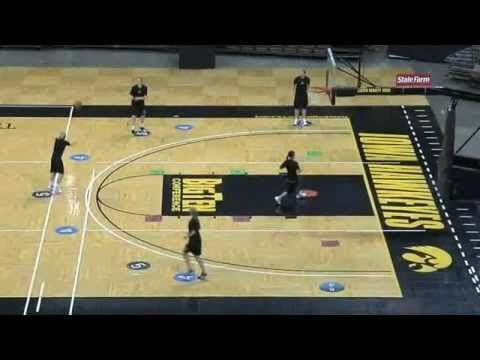
Loading…
• Numbers never used -58, 59, 60, 63, 64, 67, 68, 69, 74, 75, 78, 79, 80, 81, 82, 87, 95, 97.
Dream job. What does the European office of NBA
look like?
A. Ya. Gomelsky about strategy and tactics in basketball
replica swiss watches
Strategy is the main theoretical direction of the entire work of the team, which determines the means and methods of preparation for the main competitions. Four-year plan for the preparation of the USSR national team for the Olympics in Seoul - the strategy of the team in 1985-1988. The strategy also provides for the management of the team during the competition.
Tactics is a part of the strategy that solves the main tasks of training, taking into account specific capabilities - team resources, characteristics of opponents, competition conditions. All this determines the tactical and combination baggage of the team.
When choosing tactics of the game (attack), one should proceed, firstly, from the real capabilities of the players, taking into account, first of all, their strengths, for the disclosure of which combinations are built and learned. Secondly, attack tactics are determined by the strength and weakness of a real opponent in a tournament, match.
Secondly, attack tactics are determined by the strength and weakness of a real opponent in a tournament, match.
I usually discuss playing combinations with the players for whom this combination is designed. I know the strengths of my players, but the players themselves know them even better and can make significant adjustments to the combinations I have proposed.
A.Ya. Gomelsky about playing defense
I believe that defense is the main concern of the coach: firstly, because the victory of the team largely depends on its strength, secondly, because the attack starts from the defense, like from the stove, in- thirdly, because the players themselves never work on the elements of protection, and finally, because the audience, as a rule, does not see it, even journalists often underestimate it.
The best team cannot win without a solid defense. Team defense is built on the individual characteristics, capabilities and mood of all players. Often in training, and even in competitions, individual players show indifference to defensive actions. It always bothered me and even angered me. Yes, the menial work on defense isn't that spectacular - except for things like block shots, rebounds, interceptions.' And many players are not aggressive on defense, they are resting on defense, trying to prove themselves in attack.
Often in training, and even in competitions, individual players show indifference to defensive actions. It always bothered me and even angered me. Yes, the menial work on defense isn't that spectacular - except for things like block shots, rebounds, interceptions.' And many players are not aggressive on defense, they are resting on defense, trying to prove themselves in attack.
I am sure that without great desire, responsibility, initiative, passion, it is simply impossible to defend today.
If the defender allowed the attacker to receive the ball in the danger zone, he has already lost. And how many cases when the center is allowed to receive the ball in the three-second zone under the shield, without striving to actively fight for an advantageous position.
Often defensive players are in no hurry, they do not concentrate their attention and efforts enough on this part of the game.
I want to emphasize that the psychology of defense is one of the most important concerns of a coach, and often more depends on the focus on defense than on technique and physical condition. Doesn't the ability to intercept the ball and win the rebound depend on the mind and the ability to calculate one's strength? If a player goes to intercept the ball, exposing his rear, and slips past the ball, is this not the result of poor calculation, inability to predict, anticipate the situation, think and act responsibly? All this is the psychology of protection.
Doesn't the ability to intercept the ball and win the rebound depend on the mind and the ability to calculate one's strength? If a player goes to intercept the ball, exposing his rear, and slips past the ball, is this not the result of poor calculation, inability to predict, anticipate the situation, think and act responsibly? All this is the psychology of protection.
I believe that a player who is weak and inept in defense causes more damage to the team than a player who is weak in attack. The definition of "good defense is head and legs", while still valid, is incomplete. Fast, tenacious, active hands that can both hit and intercept the ball, and prevent a throw, pass, kick the ball while dribbling - are no less important for a defender
Counterattack
Counterattack is the most spectacular and quick use of all opportunities to achieve result.
Fast play requires high technique. The desire to play at high speeds is commendable and acceptable only if the speed does not exceed the state of the art. Otherwise, there will be more mistakes, losses of the ball than achievements. Therefore, in an effort to prepare a fast break, it is necessary to train the execution of all technical elements at high speeds, using both active and passive resistance of defenders in situations 1-1, 2-1, 3-2, 4-3, 5--4 and with numerical equality.
Otherwise, there will be more mistakes, losses of the ball than achievements. Therefore, in an effort to prepare a fast break, it is necessary to train the execution of all technical elements at high speeds, using both active and passive resistance of defenders in situations 1-1, 2-1, 3-2, 4-3, 5--4 and with numerical equality.
My idea of a counter-attack is not only to move quickly towards the opponent's backboard, but also to quickly transfer the ball to the opponent's backboard with sharp passes, or, if there is no free recipient to receive the ball, by dribbling the ball, actively moving forward. In the final stage of the fast break, players strive to create a triangle in the front line of attack with the apex on the free throw line. There should be a player with the ball, and two other players - to the left and right of him, 4-5 m ahead.
A counterattack is possible in the following situations:
1) when intercepting the ball;
2) when taking a rebound on his shield;
3) after the opponent has made free throws;
4) after winning a dropped ball;
5) after the opponent manages to score the ball.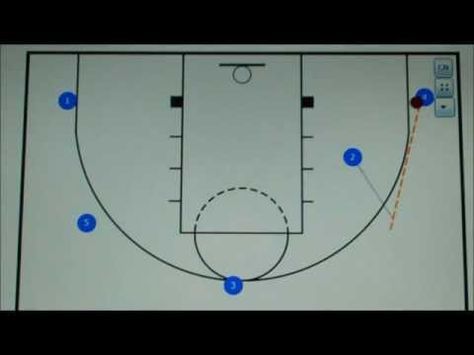
The best outcome of a fast break is taking the opponent's ring with a numerical advantage, when implementing situations in numerical equality: 1-1, 2-2, 3-3, 4-4. This is easier than beating a 5-5 defense that has already built up its defensive formations.
There are three phases in a counterattack that are equally important for success:
1) the beginning of a fast break - rebounding the ball, first pass, movement of the players, their start;
2) the middle stage of the development of an attack - the transition by the players of the middle line of the field, their advancement;
3) completion of the attack - passing the ball at speed and throwing in close proximity to the backboard.
The timing of the "rehearsed fast break" depends on the speed of the players, the ball passes and the finishing shot. The USSR national team spent 5-7 s on a layered fast break. I think that the schemes of her tactical formations will provide great opportunities for the creativity of coaches working with any teams.
Playing in the USSR national team such powerful and tall centers as A. Sabonis and V. Tkachenko made it possible to carry out a counterattack through one long pass across the entire court.
Center #5, after recovering the ball from the backboard, passes it to runaway #2.
Such an attack was especially successful when building a zone or mixed defense, when one of the defenders or wingers playing in the front line of defense was given the task of running away at the moment of throwing at our ring, in the expectation that the giants would be able to take possession of the ball , bouncing off the shield, and make a long pass across the entire field. Naturally, such a system of counterattack requires special coordination of actions, and its development takes considerable time in the training process.
Development of a quick counter-attack through the middle of the field.
Players #5, #4, #3 are fighting for the ball and, having mastered it, they try to make the first pass to player #2, who passes the ball to player #1.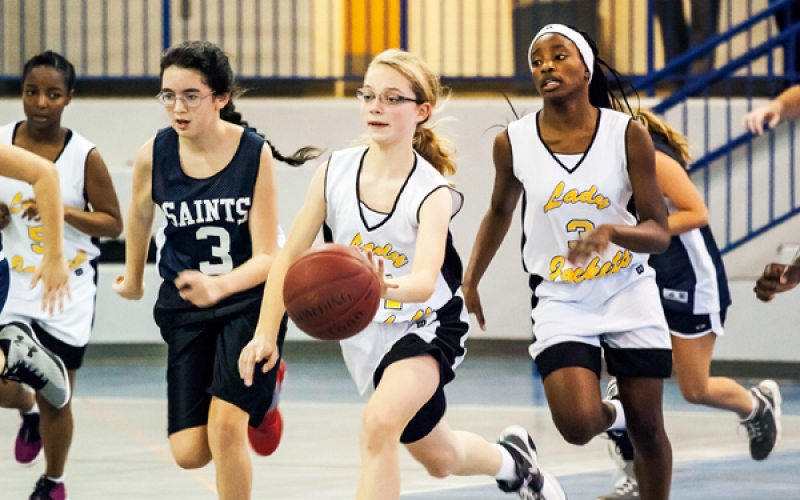 Player #1 rushes forward dribbling through the middle of the court. Players #2 and #3 overtake the dribbler at high speed, form a triangle with #1, and finish the attack with a close range throw if they manage to create a numerical advantage under the opponent's shield.
Player #1 rushes forward dribbling through the middle of the court. Players #2 and #3 overtake the dribbler at high speed, form a triangle with #1, and finish the attack with a close range throw if they manage to create a numerical advantage under the opponent's shield.
If it was not possible to complete the attack in the first echelon, then the second echelon comes into action - center players #4 and #5. They, each on their own side of the court, rush to the opponent's shield. The one on whose side the ball is on ends the attack.
Development of a fast sideline break.
On a rebound from the left side of the backboard, the post makes a quick pass to player #2, who opens to receive the pass to the sideline, just above the free throw line. At the intersection of the sideline with the center, player #1 receives a pass from player #2, then passes it to player #4, who rushes forward on the left side. Player #4 has three possible continuations of the attack: give the ball to player #5 or #3, who is running towards the opponent's backboard in a straight line, or pass to player #2 in the area of the arc. It is clear that the transfer should be made to the most open player, who is in the most advantageous situation.
It is clear that the transfer should be made to the most open player, who is in the most advantageous situation.
A similar situation occurs when attacking on the opposite side.
Development of a fast break after a free throw into our ring.
If player #4 catches a bounce or quickly clears a potted ball from behind the endline, the first pass is to the left sideline to player #1 opening at or slightly above the free throw line. Player #2 opens near the center circle, receives the ball and dribbles forward. Players #5 and #3 pass the dribbler along the touchlines, player #4 overtakes him from the right, and player #2 stays slightly back in the backing position. Thus, player #2 has four options to choose the direction of the attack.
Same procedure as above, but after rebounding a field goal or after the ball is thrown in from behind the end line.
Developing a fast break after a dropped ball in the center circle or on the free-throw line in our half of the field.
Player #5 discounts player #4 who is ready to receive the ball with his hands up. After catching the ball, #4 passes forward to player #1, who opens up to receive that pass after being screened by player #3. Players #2 and #4 support the attack. Such a combination can be played in both directions. At the heart of her success is high growth, good jumping ability and the ability to accurately throw the ball to the partner of the center player.
Same scheme, but now player #4 screens player #2 who, having received the ball from player #3, rushes forward.
The easiest way to complete a counterattack is for the players to take the shortest path to the opponent's shield. However, with the development of a counterattack, options are possible with cross screens
interaction like a trio
setting up screens for the players of the second echelon in the center of the field.
Many teams in the world, including the USSR national team, after they failed to complete the counterattack with a scoring throw, in the transition to a positional attack, spent precious time placing players, thus allowing the enemy to prepare for defensive actions and occupy all defenders advantageous positions. This is why a quick or non-stop attack after a counterattack ("transition game") is increasingly used in the tactics of the best teams in the world. I will give an example of such an attack in the USSR national team.
This is why a quick or non-stop attack after a counterattack ("transition game") is increasingly used in the tactics of the best teams in the world. I will give an example of such an attack in the USSR national team.
The fast break was not completed by the players of the first attack tier #2 and #3, nor the second tier #4 and #5. They, each on their own side, set up screens for fielders #3 and #2 for a shot from medium or long distance, and then go to the backboard to receive the ball in the three-second zone on the spot or to fight on the backboard, after a throw from one of the players # 2 or #3. Options for a non-stop attack can be very different. This could be a double or triple screen for the team's sniper, or a winger or post entering the 3-second zone after receiving the screen. It all depends on the characteristics and capabilities of the player for whom the combination is being made.
Double screen to Marciulionis (#2) to attack with his left hand from the free throw area.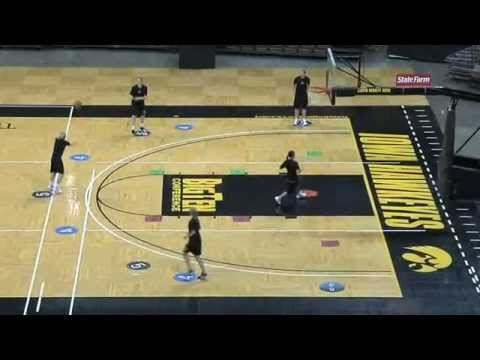
Players #4 (Volkov) and #3 (Tikhonenko) simultaneously put up two screens for player #2 (Marciulenis). #2 breaks into the free throw line, where he receives the ball from player #1 (Sokka). "Marciulionis has opportunities to continue the attack:
a) receiving the ball in motion and passing under the backboard;
b) receiving the ball with a stop and shooting at
c) passing the ball to player #5 (Sabonis) in case there is a switch of defenders.
Players #4 and #2 after screening go under the backboard to fight for the rebound.
Mixed defense
There are several systems of mixed defense:
1. Four players build a zone defense 2-2
or 1-2-1
, and one defender personally marks the strongest attacking sniper or center, depending on capabilities and tactics of the opponent.
2. Three players build a 2-1 zone defense and two guard the enemy's strongest snipers.
3. One player completes the zone formation and four players cover the opponents personally.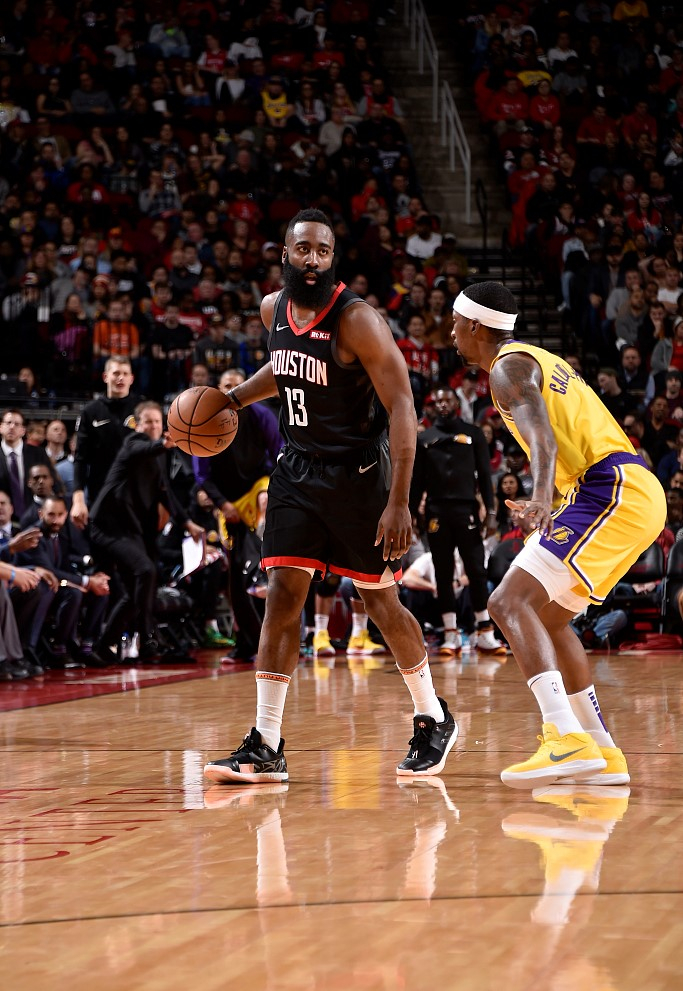
4. Two players form a zone defense and three players act as an individual defense.
Mixed defense brought good luck to the USSR national team and the CSKA team more than once. The choice of defense has always been determined by the characteristics of the opponent and our capabilities.
In the final of the Olympic tournament in Seoul against the team of Yugoslavia, we used a mixed defense 1-4.
Sabonis played a zone defense, the rest of the players closely guarded their opponents. This was due to the presence of Vrankovic or Raja in the Yugoslav team, who are not very dangerous away from the shield, and the fact that Petrovich, Paspal, Kukoch posed a big threat. The players who guarded the leaders of the Yugoslav team could, with a greater degree of risk, fight with their opponents to get the ball. They knew that Sabonis would help them if they were beaten.
A similar defense was chosen in the semi-final tournament in Seoul against the US team. Sabonis did a zone defense and let Robinson or Reed or Maning shoot from wide. But the rest of the US players were completely covered, and a player like Maning did not bring a single point to the team. As a result, the USSR national team won 82:76. And Sabonis, who participated in the Olympics after a serious injury, two operations, took first place in the selection of balls from shields and made a great contribution to the victory of the USSR team.
Sabonis did a zone defense and let Robinson or Reed or Maning shoot from wide. But the rest of the US players were completely covered, and a player like Maning did not bring a single point to the team. As a result, the USSR national team won 82:76. And Sabonis, who participated in the Olympics after a serious injury, two operations, took first place in the selection of balls from shields and made a great contribution to the victory of the USSR team.
Sometimes, with two centers Sabonis - Tkachenko, we built a mixed, personally set defense 3-2. Two giants and one mobile defender played well in the zone. In the early 70s, it was Eremin, then Valters, and at the Olympics and the pre-Olympic tournament Sokk performed this function, and Belostenny and Volkov played instead of Sabonis and Tkachenko in Holland.
At the Seoul Olympics, we used such a defense (3 in the zone, 2 in person) against the Brazilian team.
Sabonis, Volkov and Sokk built a triangle on top of which Sabonis and Volkov played. Tikhonenko took care of So-uzu personally, and Marciulionis took care of Schmidt, and although these two players scored 65 points together, the match turned out to be very difficult for us, but we still won 110:105. The mistake in the choice of defense was that Schmidt outplayed the smaller Marciulionis in different positions, and Souza outplayed the slower Tikhonenko. In the last 10 minutes of the match, Volkov was attached to Schmidt, Marciulionis switched to Souza, and we changed Tikhonenko to Goborov in zone defense.
Tikhonenko took care of So-uzu personally, and Marciulionis took care of Schmidt, and although these two players scored 65 points together, the match turned out to be very difficult for us, but we still won 110:105. The mistake in the choice of defense was that Schmidt outplayed the smaller Marciulionis in different positions, and Souza outplayed the slower Tikhonenko. In the last 10 minutes of the match, Volkov was attached to Schmidt, Marciulionis switched to Souza, and we changed Tikhonenko to Goborov in zone defense.
Benefits of mixed defense
allows you to fight with him to get the ball, while expecting the active help of teammates, without fear of a throw.
2. Such a system, if the opponent is not prepared for it, tactically introduces confusion and makes it difficult to carry out combinations of screens.
3. Combines the best aspects of individual and zone protection systems.
4. Promotes a quick transition from defense to counterattack.
5. Allows players to use their strengths in defense and not show weaknesses.
Allows players to use their strengths in defense and not show weaknesses.
6. Can take the point guard out of the game and deprive the opponent of the usual formation and rhythm, destroy the counterattack if applied pressure throughout the field.
Weakness of the mixed defense
1. A technically competent team that has several leaders easily rebuilds the attack and breaks the mixed defense.
2. Simultaneous movements of two or three players diagonally can destroy a mixed defense if the opponent manages to create a numerical advantage on one of the sides of the field.
3. Often vulnerable to medium throws from 3-4m.
4. Requires special lengthy preparation, coordinated actions, high teamwork of the whole team for rebuilding and interchangeability in positions.
5. If one of the five players did not have time to reorganize or did not cope with his duties, then the whole idea of such a defense breaks down.
A.Ya. Gomel.

Pressing defense
Pressing is the most active type of defense, constant pressure on the opponent. It can be personal or zone, it can start from the moment the opponent throws it: all over the court, on 3/4 of it, in their own half, i.e. on 1/2 site.
The goal of defense by pressing is not only psychological pressure on the opponent, but also the desire to break the opponent's established game, break his habitual connections between defense and attack, his combinations, make inaccurate passes of the ball, hasty - throws. It is impossible to apply pressure without mastering enough methods of individual protection. This form of defense requires high physical condition, good reserve and teamwork of all players and team units.
Pressing is used both as a system of play for long periods of time, and as a forced measure: when losing in a score to increase the pace or when waiting for pressure from an opponent.
By pressing, we try to take the ball away from the opponent - we force him to make false, inaccurate passes that are easily intercepted.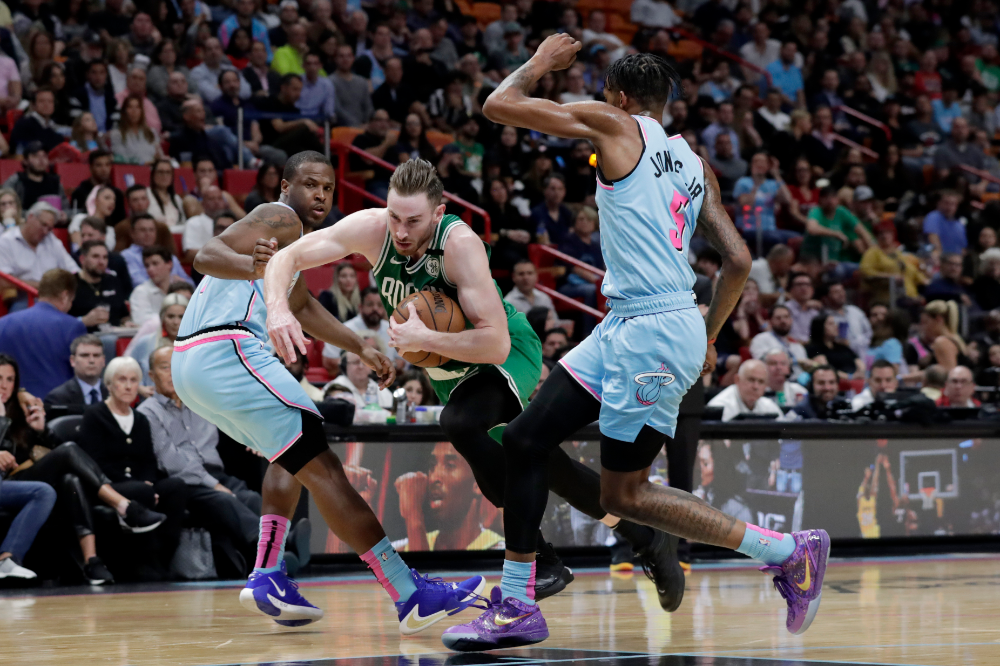 Often, the opponents of the front line of pressing, having missed the opponents, do not pursue them, but watch the development of further events - this is a gross mistake. It is necessary to chase the player with the ball, trying to knock the ball from him from behind, stepping on his heels. Thus, you force the opponent to rush, worry, make mistakes.
Often, the opponents of the front line of pressing, having missed the opponents, do not pursue them, but watch the development of further events - this is a gross mistake. It is necessary to chase the player with the ball, trying to knock the ball from him from behind, stepping on his heels. Thus, you force the opponent to rush, worry, make mistakes.
If in zone or personal pressing you are left without a player and do not help a friend, you make a miscalculation. If one of the five pressers is not active, the work of the entire team goes down the drain. Pressing is primarily an active defense of the team.
In modern basketball, many coaches tend to believe that personal pressing is less effective, difficult, leads to a large number of personal violations and is inferior in usefulness to zone pressing systems. I also believe that a strong, technical player with good dribbling is able to cope with personal pressure.
In addition, with a stretched defense, it would be incredibly difficult to keep such players as Marciulionis, Volkov, Kurtinaitis, Petrovich, Schmidt, Kukach, Paspal, Rivier, Gallis one on one.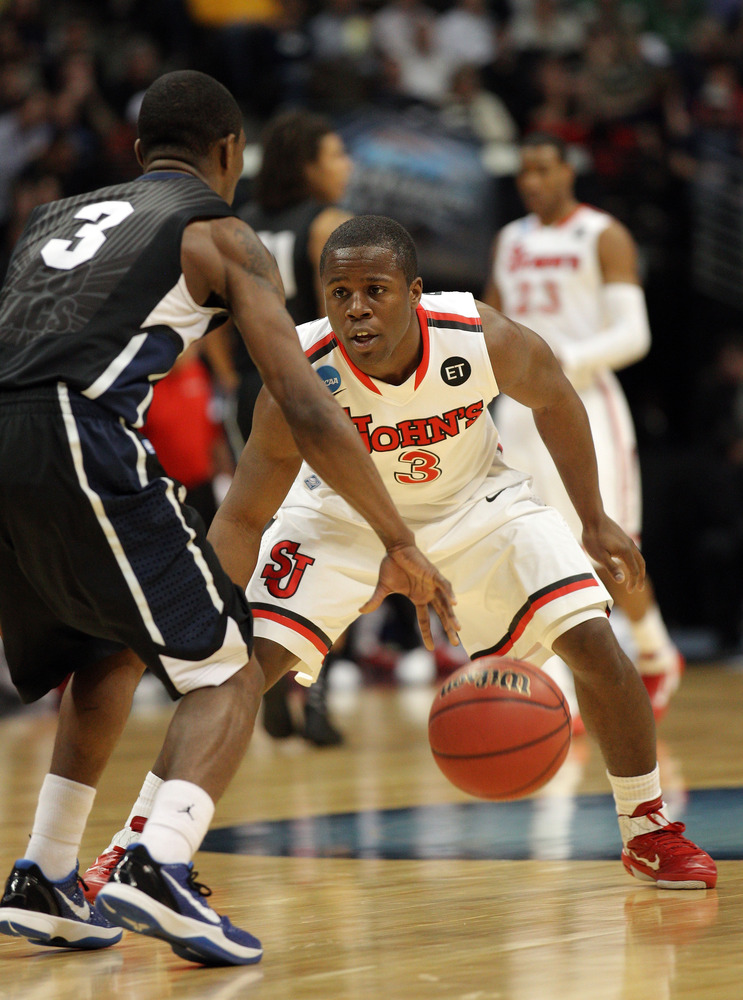 I'm not talking about NBA players. But although zone pressing has become more popular, it is impossible to do without the ability to play personal pressing. Therefore, it is necessary to train defense daily 1-1, 2-2, 3-3, 4-4 all over the court, with and without the ball, with and without dribbling, with and without screens, first at a walk, then at high speed.
I'm not talking about NBA players. But although zone pressing has become more popular, it is impossible to do without the ability to play personal pressing. Therefore, it is necessary to train defense daily 1-1, 2-2, 3-3, 4-4 all over the court, with and without the ball, with and without dribbling, with and without screens, first at a walk, then at high speed.
Exercises are useful in which the number of defenders prevails over the number of attackers. These exercises promote the interaction of the defenders, instill the skills of tackling the ball. They are also good for attacking players. When training personal pressing, due attention should be paid to the rapid movements of players in an active stance, in different directions, with a skillful change in the positions of players. Defenders of the first line of defense seek to push their attackers to the sidelines and prevent the attacker from getting around him with the ball and without the ball.
If one of the defenders managed to stop the attacker with the ball at the touchline at the intersection with the penalty or center line, the defensive partner must come to the aid of a friend: together they force him to make a cross pass, which the other three players are ready to intercept.
The initial stage of personal pressing is carried out by two fundamentally different tactical constructions:
1. The opponent who introduces the ball into the game holds a high moving edge and with an active movement of the hands prevents him from making an aimed pass.
2. No one guards the opponent who puts the ball into play, but two pressers prevent the most dangerous dribbler from getting the ball.
For example, Volkov secured Sokka and Marciulionis from behind when passing to player 5.
A few tips when defending with personal pressure: make him stop and do not let him make an accurate pass, interfering with his hand movements;
2) if the defending partner allowed himself to be bypassed, immediately come to his aid, of course, without leaving your ward in a safe position under the shield;
3) constantly watch not only your ward, watch the actions of partners, learn to see the whole field.
In the USSR national team and CSKA, zone pressing 1-2-1 - 1 brought us the most success.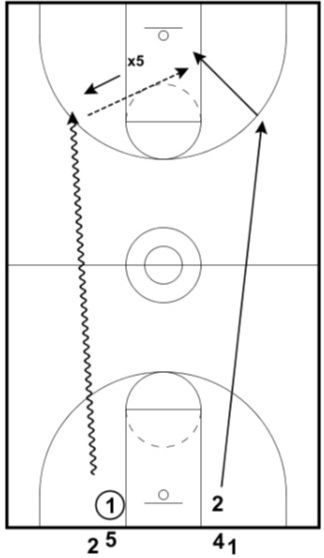 We started pressing from the opponent's front line after a goal and a free kick. High extreme Volkov interfered with the throw-in. If the ball was injected to the right, Marciulionis and Volkov attacked X2 defender together, trying to prevent him from going forward and make an aimed pass to XI defender, Sokk followed the movement of X3 and X4. Sabonis secured the rear, was responsible for long passes and for the X5 player. Tikhonenko in the center of the field followed X4's pass with a long pass and went to the ball passing side.
We started pressing from the opponent's front line after a goal and a free kick. High extreme Volkov interfered with the throw-in. If the ball was injected to the right, Marciulionis and Volkov attacked X2 defender together, trying to prevent him from going forward and make an aimed pass to XI defender, Sokk followed the movement of X3 and X4. Sabonis secured the rear, was responsible for long passes and for the X5 player. Tikhonenko in the center of the field followed X4's pass with a long pass and went to the ball passing side.
Returning with a weak attack, we built a defense 2-3
Zone defense in basketball
The meaning of this defense is that the players are in charge of a certain area of the field, in accordance with the position of the ball and the formation of the attacking team.
Benefits of zone defense:
1. Gives the opportunity to arrange players according to their physical, technical and mental characteristics.
Tall, jumpy players are located close to the shield, mobile, fast players - in positions higher from the shield.
2. More team-oriented, easy to learn, capable of compensating for individual players' gaps in defense.
3. Promotes counter-attacking and frequent interceptions of the ball with the greatest possible degree of risk, because. Partners are always ready to help.
4. The number of fouls in a zone defense is usually less than in a personal defense.
5. This defense is less vulnerable against screen combinations.
6. Can concentrate with strong opponent centers and stretch with snipers.
7. More than personal protection, it saves players' strength and protects leaders from fouls.
8. Most effective against opponents with strong centers.
9. A team that owns a zone defense can easily build mixed forms of defense: 3-2, 4-1, 2-3.
10. Convenient and suitable for small fields.
Disadvantages of zone defense:
1. Inferior to the personal psychological responsibility of the players, their charge for individual victory in defense.
2. Less useful against teams with strong snipers.
Less useful against teams with strong snipers.
3. As a rule, the corners of the court are less protected in zone defense.
4. Zone defense may be used sporadically and should not be the primary form of defense. It is not advisable to use zone defense at the beginning of the match, when the opponent's players are not yet tired, energetic enough - their throws are more accurate and productive than at the end of the game.
There are several formations of the zone defense, however, each of the zone defenses should easily transform depending on the attack - stretch when attacking from a distance and group around the ring.
Even type of zone defense formations includes systems: 2-2-1, 2-1-2, 2-3.
Odd formation: 1-2-2, 1-3-1, 3-2.
Each of these constructions has its advantages and disadvantages, which are useful to analyze.
The arrows indicate the direction of movement of the players. The shaded places on the court are the weak positions of the defense.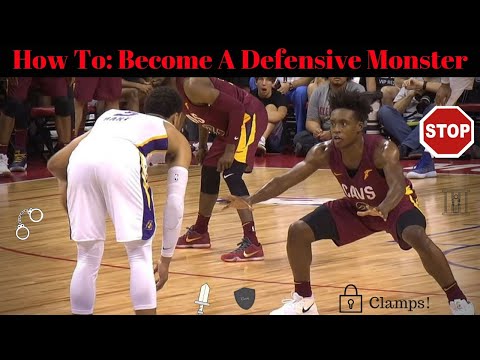
Zone defense 1-2-2
#1 - the lightest, fastest defender, #2 and #3 - quite mobile, jumpy, good if their height is at least 2 m. #4 and #5 - centers. Their task is to fight with the opponent's centers, picking up balls from the shield.
This system is most useful against teams trying to attack from under the shield through the post. Disadvantages - weak positions indicated in the figure.
Zone defense 2-1-2
It is used against strong opponent's centers who are dangerous on the "second floor" when rebounding the ball. Good for developing a counterattack with fast #1 and #2 players. Vulnerable in corners under 45, in the center for long and medium throws. The task of post #5 is to mark the opponents' post and, together with ?3 and ?4, create a rebounding triangle. #3 and #4 are mobile and high wingers, they can be swapped depending on the place of the sniper's attack.
Zone Defense 1-3-1
Helps to keep #3, #5, #2 between the ball and the basket at all times, used against opponent's strong centers and shots from middle and close positions. Her weakness is throws from the corners of the site and passes to the shield along the front line.
Her weakness is throws from the corners of the site and passes to the shield along the front line.
#1 - the fastest defender, running into the gap in every possible situation, #2 and #3 - mobile, jumping players, #5 - center, #4 - the fastest winger, able to move into the corners of the court.
Zone defense 3-2
#1, #2 and #3 are aggressive, mobile players, the success of the whole system largely depends on their activity. All three are focused on intercepting the ball and counterattacking. This system is most acceptable against teams seeking to attack from a distance, and less suitable against strong centers. The 3 second zone and 45 angle positions are the most vulnerable. #1 is in charge of the foul line. #2 and #3 are in a rebound fight. #5 and #4 are the first and second centers.
Zone protection 2-3
Strongest under the backboard, in the corners of the court along the front line. It is used against a tall, powerful team attacking from close positions and from under the shield. Often used for group selection of the ball in the corners of the court. When interacting #4 and #2 or #3 and #1, the defense is less effective on the foul line and at a 45 angle. #5 - center, #4 - second center, #3 - winger, #1 and #2 - defenders, constantly aimed at interception and counterattack.
Often used for group selection of the ball in the corners of the court. When interacting #4 and #2 or #3 and #1, the defense is less effective on the foul line and at a 45 angle. #5 - center, #4 - second center, #3 - winger, #1 and #2 - defenders, constantly aimed at interception and counterattack.
Zone protection 2-2-1
This defense is used by agile and short teams aiming to intercept the ball and constantly counterattack. This zone counterattack is used against teams seeking to attack from medium distances. Center #5 is responsible for rebounding, wingers #3 and #4 are responsible for positions in corners and under 45 , rebounding the ball and for the foul line.
Defenders #1 and #2 tend to close the passes to the shield and into the three-second zone, while they themselves are constantly aimed at counterattacking.
A.Ya. GomelskyDefense against ball carrier
It is necessary to work out the correct position of the body in a basketball stance: the center of gravity is evenly distributed on both legs, but not on the full foot, but on the toes, with a "charged" (ready for any movement) foot, knees slightly bent, legs slightly wider than shoulders . Boxing stance - like the great Michael Jordan.
Boxing stance - like the great Michael Jordan.
If the opponent is in possession of the ball, one arm of the defender must be directed at the ball and constantly attack the opponent, preventing him from aiming or throwing (best if it touches the attacker), and the second arm slightly pulled back. Many defenders, being between the player with the ball and the basket, even in the correct stance, do not actively use their hands, do not make an offensive movement towards the attacker, which allows the opponent to calmly take further actions. At the same time, it must be remembered that you cannot cross your legs, that the distance between the defender and the opponent must be calculated so that the opponent can pass with a dribbling to the ring.
Contact defense against the ball carrier, although difficult and somewhat risky, is modern and has its advantages. If your arm extended to the opponent reaches his chest, then by doing so you prevent the attacker from lifting the ball up for a throw.
Defender's movements should be trained regularly:
a) in each training session - with and without resistance;
b) with one or two balls;
c) with side steps, making contact with the body closest to the attacker.
The defender's actions in different situations can be divided into 12 positions:
1. Defense against a dribbler driving the ball to your ring.
2. Defending against a player who has finished the dribble and is looking to either shoot or pass.
3. Defense against an attacker 5-6 m from the backboard, but not using the dribble.
4. Actions of defenders in numerical minority.
5. Actions of two defenders against three forwards.
6. Actions of three defenders against four forwards.
7. Actions of defenders during screenings.
8. Rear screen protection.
9. Slip protection.
10. Group tackle by two defenders.
11. Defense against the first pass to the counterattack.
12. Fighting the attacker in the corners of the court.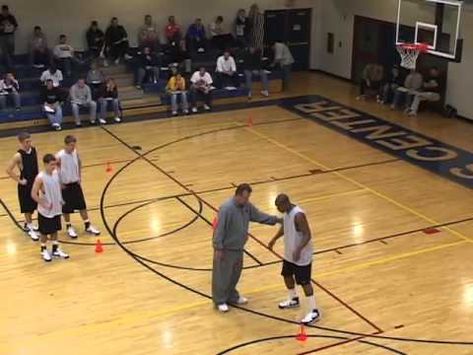
Let's try to analyze the defender's actions in each of these positions.
1. Defender's task - in a parallel low stance, without crossing the legs, move backwards, knees slightly bent, one hand all the time makes attacking movements towards the dribbler (feints with the body and head participate in this frightening dribbler movement), with the other hand he tries to stop the dribble (if possible, knock the ball out). The raised hand is ready to prevent the presenter from making the pass. Hands can be changed, they are always in motion.
As already mentioned, one should move on a "charged" foot, the heels do not touch the floor, the back is straight, slightly tilted forward, the head is raised up.
The leader should be pushed to the sideline, in the corner of the court, or his movement should be directed towards the defensive partner, remembering that the leader must not be allowed to go to the "strong" side (if left-handed - to the left, if right-handed - to the right).
The distance from the leader should be maintained depending on the speed of his rushing with the ball, his ability to attack or pass, as well as your ability, taking into account the position on the field of defensive partners. Do not rush to take the ball away from a good dribbler, wait for him to stop or make a mistake.
2. If the attacker has finished dribbling and has stopped to shoot or pass the ball, the defender must definitely get close to him, actively using his arms, preventing him from concentrating on the next action. The hand closest to the opponent must touch the fingers of his chest or stomach and not allow him to lift the ball up to attack the ring or pass. The defender seeks to force the opponent to turn his back to the shield and, without stopping attacking the attacker, prevents him from making an aimed pass. The defender must signal to his defensive partners to be ready to intercept the ball. These are already team actions.
3. If the opponent has received the ball 5-6 m from the backboard and he is in possession of the dribble, the defender must not stop actively attacking the attacker; make short lunges with your front foot, use your hands to prevent him from aiming. The attacker cannot be missed to the shield along the front line, if he moves slightly towards it, none of the partners will help the defender. The hand close to the end line insures the passage with the lead, the other one attacks the attacker.
The attacker cannot be missed to the shield along the front line, if he moves slightly towards it, none of the partners will help the defender. The hand close to the end line insures the passage with the lead, the other one attacks the attacker.
Do not give in to feints. If the attacker went to the end line where the defender took up position, you can meet him with his chest and show the referees that he knocked you down. Don't be afraid and learn to fall gently on your back.
If the attacker, despite the activity of the defender, lifted the ball for a throw, you should try to jump with him and prevent the throw. Do not stop working even when the opponent has already made a throw or pass. Do not turn away from him and block his path to the shield. When you take a step back, meet him with your face, and do not try to run after him. You should always be in these moments between the opponent and your shield.
4. If the defender is alone against two attackers, he tries to prevent the ball from being thrown from under the backboard and retreats with his back to his ring so that he can see both attackers.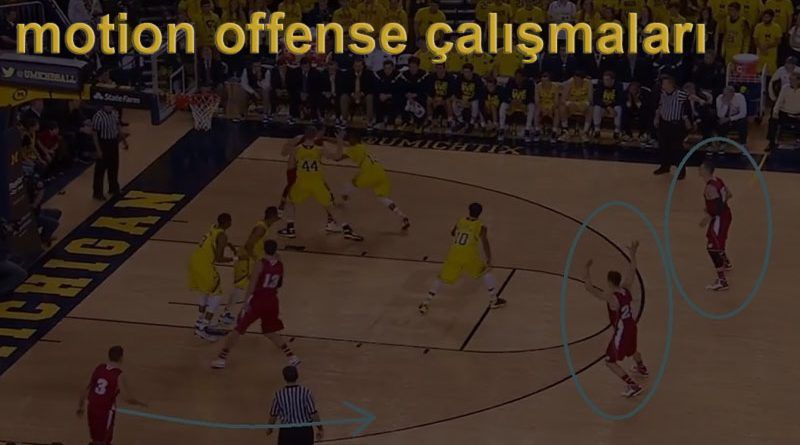 With false movements, he tries to stop the player with the ball and prevent him from making a pass to the opponent under the ring or in time for him in order to block the throw from afar. Not allowing the ball to be thrown from under the shield, the defender will fulfill his mission.
With false movements, he tries to stop the player with the ball and prevent him from making a pass to the opponent under the ring or in time for him in order to block the throw from afar. Not allowing the ball to be thrown from under the shield, the defender will fulfill his mission.
2x1 training on the spot and on the move develops reaction in defenders, teaches active arm movement, backward movement, composure and ability to intercept the ball.
5. Two defenders against three forwards - a common situation in any match, so the defenders, regardless of their position, being in the minority, must know their maneuver.
The front defender moves towards the dribbler to stop him at the top of the three-point offensive zone. He uses a feint, showing that making contact with this attacker is his main real task. At the same time, he should not get close to the opponent leading the ball. The rear defensive player takes a position on the free throw line, behind the front one and, after the pass from the dribbler, moves towards the player who received the ball - he is responsible for passing this player to the backboard or throwing from close range. The front defender, meanwhile, quickly moves to the third striker under the shield, managing to prevent him from getting the ball. The task of the two defenders is to prevent the ball from being thrown from under the shield. Exercises 3x2, 4x3, 5x4 are a good school for practicing such actions. You can train them by attacking with two balls.
The front defender, meanwhile, quickly moves to the third striker under the shield, managing to prevent him from getting the ball. The task of the two defenders is to prevent the ball from being thrown from under the shield. Exercises 3x2, 4x3, 5x4 are a good school for practicing such actions. You can train them by attacking with two balls.
6. If three defenders are defending against four attackers, their actions are built as follows. If attacker XI has the ball, defender ?1 rushes towards him, defender ?2 is responsible for throwing and moving to attacker XZ's shield, defender ?3 moves to the shield. If attacker X2 receives the ball, defender ?1 tends to it. Defender ?3 is responsible for attacker X4, defender ?2 moves to the basket.
A 4x3 drill on the spot and on the move, with rebounding the ball after a throw, with one and two balls - a good rehearsal for a defense of three against four.
7. Today, not a single even very serious team imagines an attack without a combination of screens.
Coordination of actions of the team's defenders, warning about the impending screen determine the preparation of the team to fight the screens.
The guard guarding the screening player must warn his partner of the imminent threat. If the screen without the ball is made by attackers of the same height, there is no great danger of changing the defenders.
If the defenders want to avoid changing when screening from the side, the defender must turn towards the defender and step back, bypassing him from behind, which will not allow the attacker to pass to the backboard.
If the attacker screens from the blind side, from behind, the defender must open towards the defensive partner, turning sideways to him. This will make it difficult to set up a barrier.
8. If your partner puts a screen on the sniper when attacking from medium or long distances behind the defender and you did not have time to get out from under such a screen, a change is necessary: your partner switches to the sniper with his hand raised and prevents him from making a throw. You are left with a dangerous, taller opponent, and your task is to prevent him from getting the ball or picking up the ball after the throw.
You are left with a dangerous, taller opponent, and your task is to prevent him from getting the ball or picking up the ball after the throw.
It is difficult to do without the help of partners in this situation. In general, I am a supporter of the smallest shift with screens, because. this reduces individual responsibility and gives the attacker a chance to beat the defender.
9. If your player, while in possession of the ball, seeks to pass to a teammate who is close to him, you must step back and allow your defensive partner to slip, and then take an active position towards your attacker.
10. The defensive player should always try to get the dribbler to the touchline, into the corner of the court, stop him and turn his back to the backboard.
The second defender, seeing this situation, attacks the opponent with the ball from the other side. Both of them with active hand movements interfere with making an aimed pass. It is important that the rest of the defense players are ready, focused on intercepting the ball.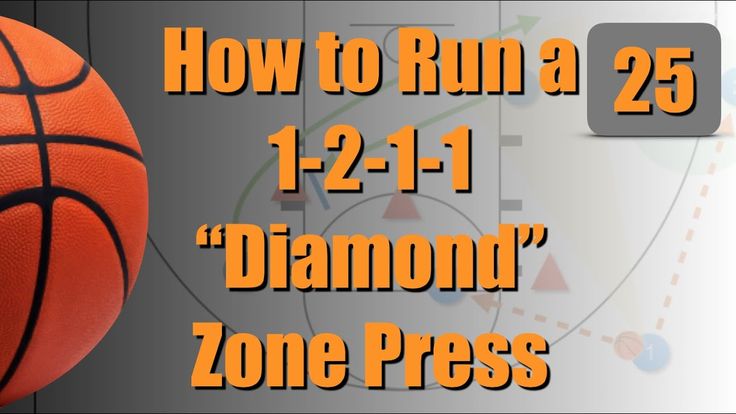
11. The USSR national team used the defense against the first pass in a fast break more than once against opponents who counterattack through a fast dribbler, sending him the first pass after picking up the ball from the backboard. So we often defended against the Spanish national team, where the ?1 dribbler was Carbolan or Salosobal.
Our team's tall center, who plays close to the backboard, whether it's Tkachenko, Sabonis or Belostenny, prevents the dribbler from making an accurate first pass. At the same time, our fast defender, for example, Homichujus, presses ?1 opponent and does not allow him to receive the ball. The other three of our players were to immediately return to their zone.
So often the counterattack of the Spanish national team failed, in which the Spaniards were especially dangerous and productive.
I must say that there are some significant differences between the game of our and American defenders. According to my conclusions, they are:
1. Americans on the defensive are always offensive, they are not afraid of a contact attack on the attacker in possession of the ball.
Americans on the defensive are always offensive, they are not afraid of a contact attack on the attacker in possession of the ball.
In a low stance with arms raised, the US defender seeks to hit the ball, prevent a pass from being made, not to mention a shot. If the attacker lifts the ball up, the defender immediately reacts to this: his hand rises up and seeks to interfere with any actions of the attacker. The attacker put the ball down - the defender immediately takes two quick steps back, preparing to prevent the opponent's pass without losing his defensive stance.
2. When active, the American defender never allows the attacker to pass with the ball through the center, into the middle, but constantly pushes him to the sideline. When an attacker is missed on the front line, teammates immediately come to the aid of the defender. Our tactic is, on the contrary, to close the baseline, where, as we believe, it is more difficult to provide team assistance. I think it's best to find a compromise here: train the safety net both in the middle of the three-second zone and when passing on the front.